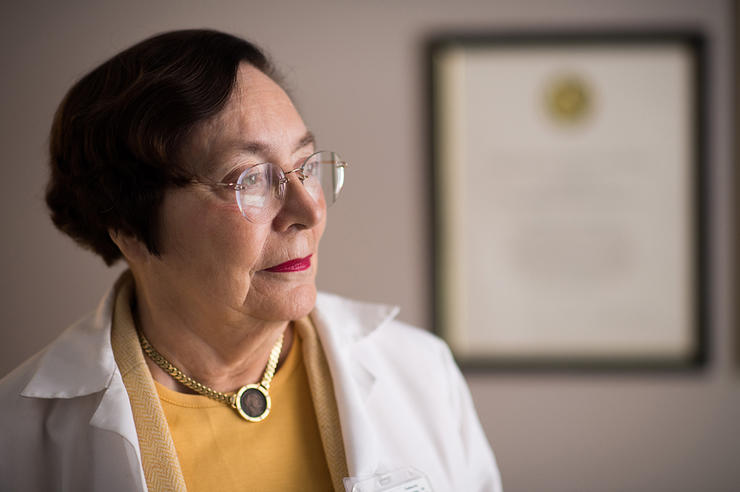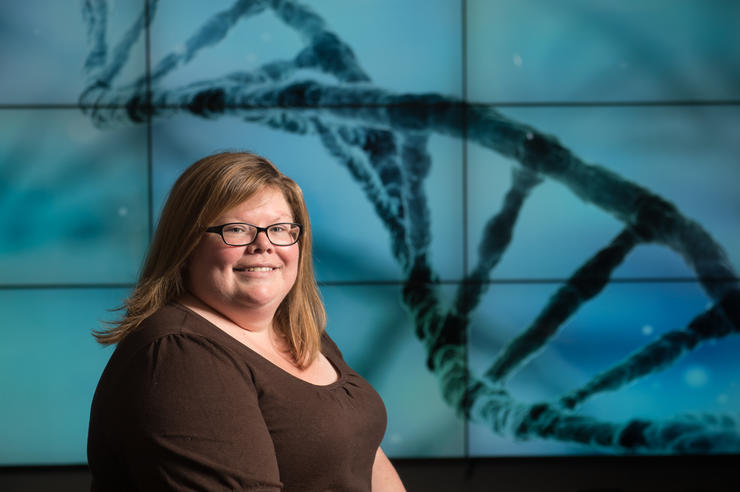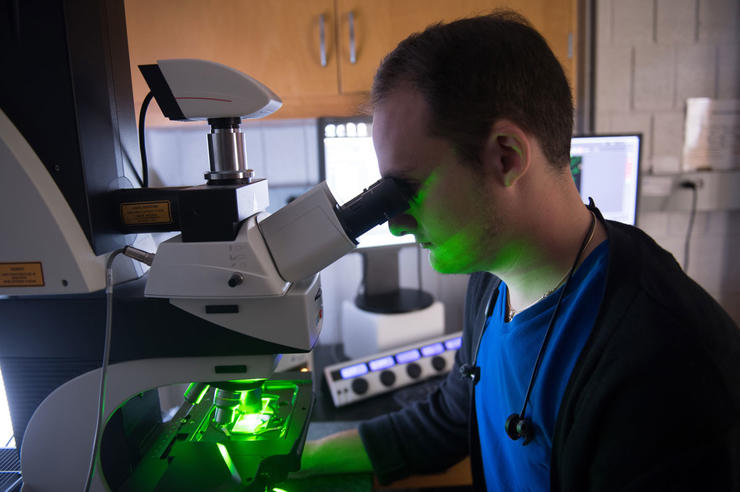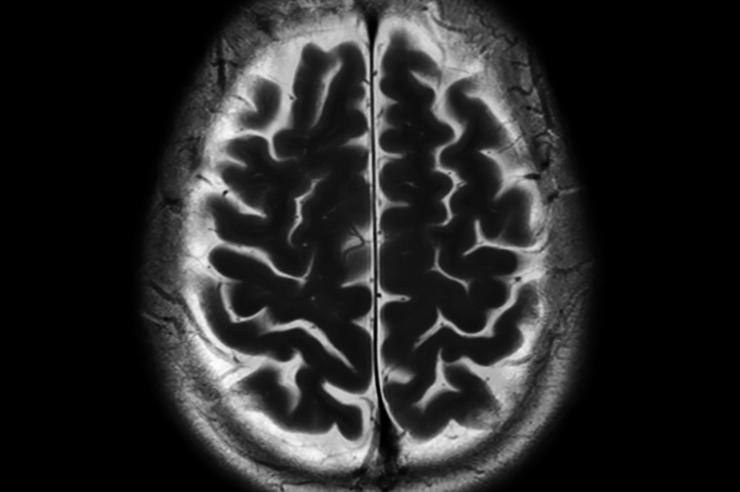Breaking barriers in brain research
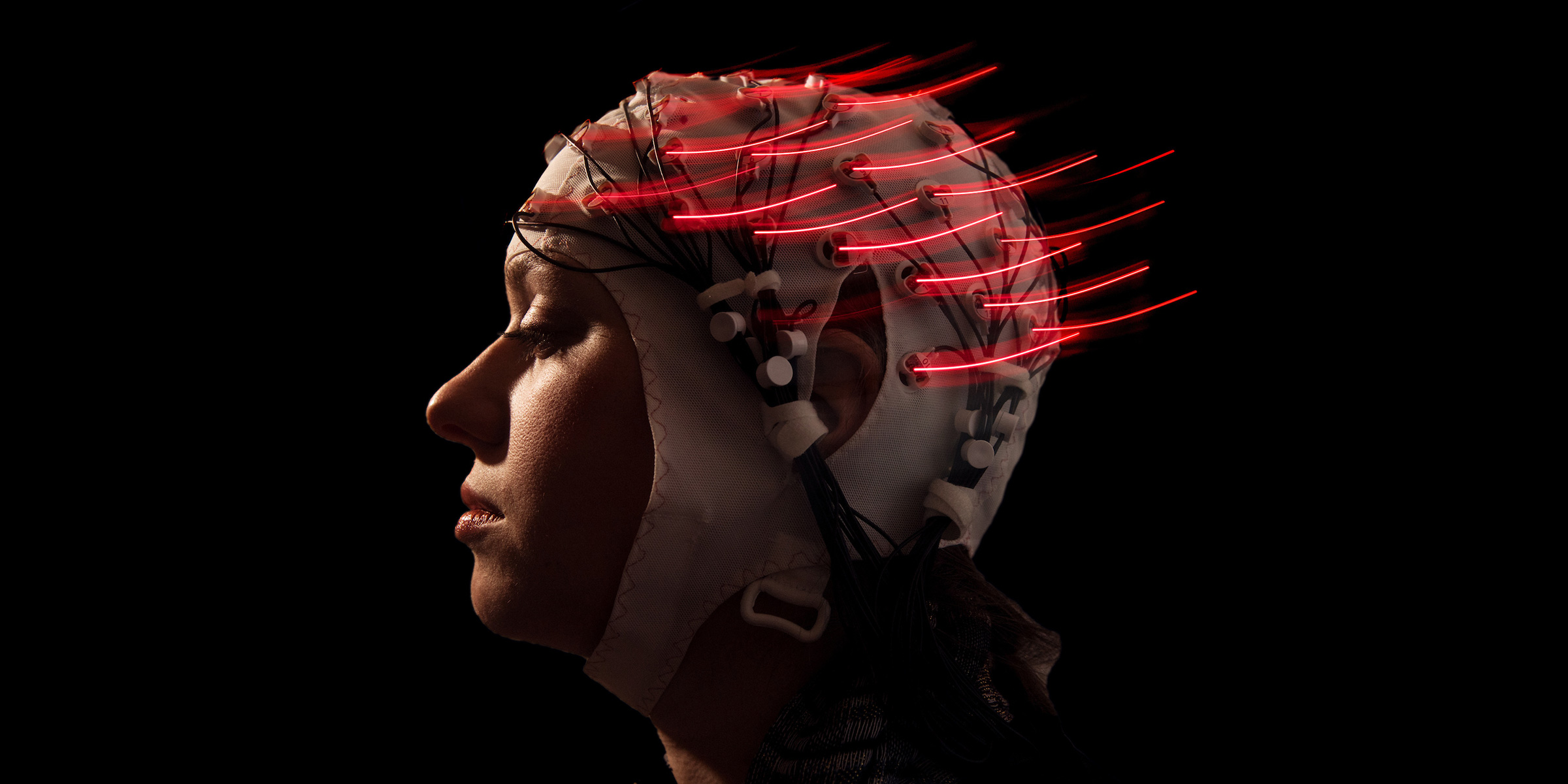
Every Tuesday, University of Iowa physician-scientist Kumar Narayanan steels himself as he bikes to work. It’s the most challenging day of his week—the day he sees patients from across the state who are affected by Parkinson’s disease.
Narayanan has to deliver the bad news to patients and their families that they have developed the neurological disorder, one that affects both motor and cognitive skills. One that has no cure.
“It’s discouraging and dispiriting to tell person after person that they have Parkinson’s. And it’s not getting better,” says Narayanan, an assistant professor of neurology who sees patients at University of Iowa Hospitals and Clinics. “The population of patients with Parkinson’s disease is going to double by 2030 because people are living longer. This is a problem that we’re going to have to solve, and will be the enduring challenge of our generation.”
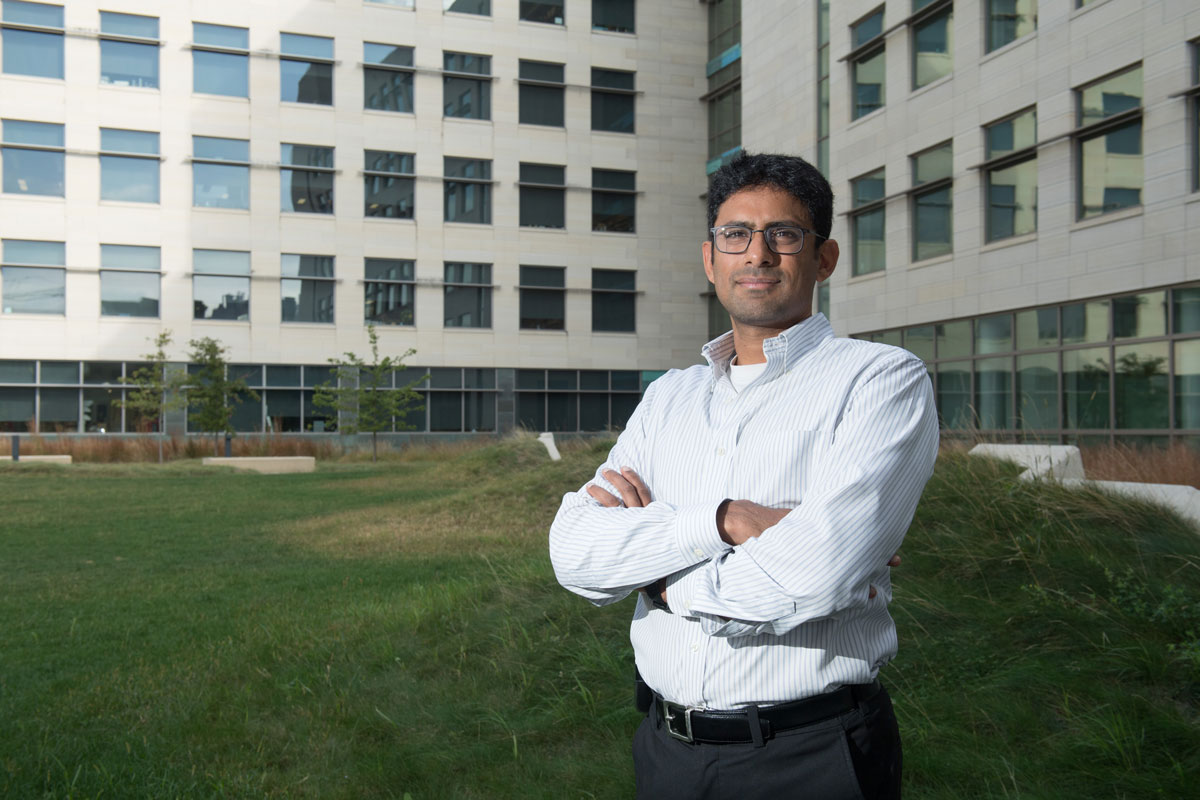
Researchers are chasing scientific breakthroughs in neuroscience that could lead to novel treatments—even cures—for psychiatric and neurological disorders such as Parkinson’s. And the University of Iowa is poised for success thanks to several new initiatives.
A new undergraduate major in neuroscience will complement an already distinguished graduate program, preparing the next generation of scientists. A new psychological and brain sciences building will modernize study in the rapidly evolving science of psychology, providing students and faculty with state-of-the-art classroom and laboratory space. Perhaps most significant in the university’s commitment to neuroscience is the Iowa Neuroscience Institute.
Established in 2016 with a $45 million grant from the Roy J. Carver Charitable Trust and support from the UI Roy J. and Lucille A. Carver College of Medicine, the multidisciplinary center is comprised of more than 100 scientists across campus determined to solve the mysteries of the brain and nervous system. The institute has two floors of dedicated lab space in the Pappajohn Biomedical Discovery Building, which is adjacent to the nationally recognized UI Hospitals and Clinics on the west side of campus.
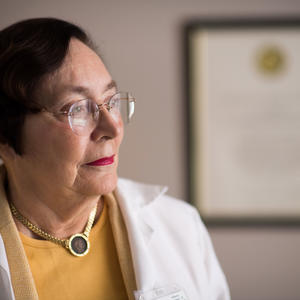
Nancy Andreasen, who holds the Andrew H. Woods Chair of Psychiatry, is a pioneer in neuroimaging, having used MRI technology in the 1980s to show that schizophrenia is a disorder of the brain. READ MORE >>
Leading the charge
At the helm of the Iowa Neuroscience Institute is director Ted Abel, an internationally renowned neuroscientist and fellow of the American Association for the Advancement of Science. He previously directed the Biological Basis of Behavior Program at the University of Pennsylvania, and he hit the ground running when he arrived at the UI in January 2017, successfully recruiting a number of prominent scientists from across the country.
By building a collaborative team of researchers and securing vital resources, such as funding, research cores, and equipment, Abel aims to improve the lives of patients with disorders ranging from autism to Alzheimer’s disease to stroke. Neurological diseases afflict more than 100 million Americans, according to a 2017 report published in the Annals of Neurology, straining families, burdening the health care system, and costing nearly $800 billion annually.
“My vision is to bring together a group of researchers, students, fellows, and clinicians to study how neural circuits in the brain give rise to behavior and how those go awry in neurodevelopmental, psychiatric, and neurological disease,” says Abel, whose research focuses on autism and how sleep enhances memory formation. “In other areas of medicine, like cardiology and cancer and diabetes, doctors have been able to develop tests. They’ve been able to develop treatments that either delay disease, as in the case of heart disease, or treat those disorders, as in HIV. With neurological and psychiatric disorders, however, we’ve haven’t gotten there. The impact on the population continues to grow. Yet, with the recent striking advances in our ability to image the function of neural circuits and to manipulate their activity, neuroscience is poised to make a difference with new insights into brain disorders.”
That impact is something Abel has experienced firsthand. His teenage son has autism spectrum disorder, and his own research on the male predominance in autism has the potential to bring him—and the scientific community—one step closer to understanding the disorder, which affects an estimated 1 in 68 children in the U.S. In a recent study, Abel uncovered a hint: Male mice that model autism showed an impairment in reward learning, or the ability to associate a reward with a particular stimulus and response.
“I’m confident the University of Iowa can be a game changer because we have the resources to do it and a collaborative community that is committed to it.”
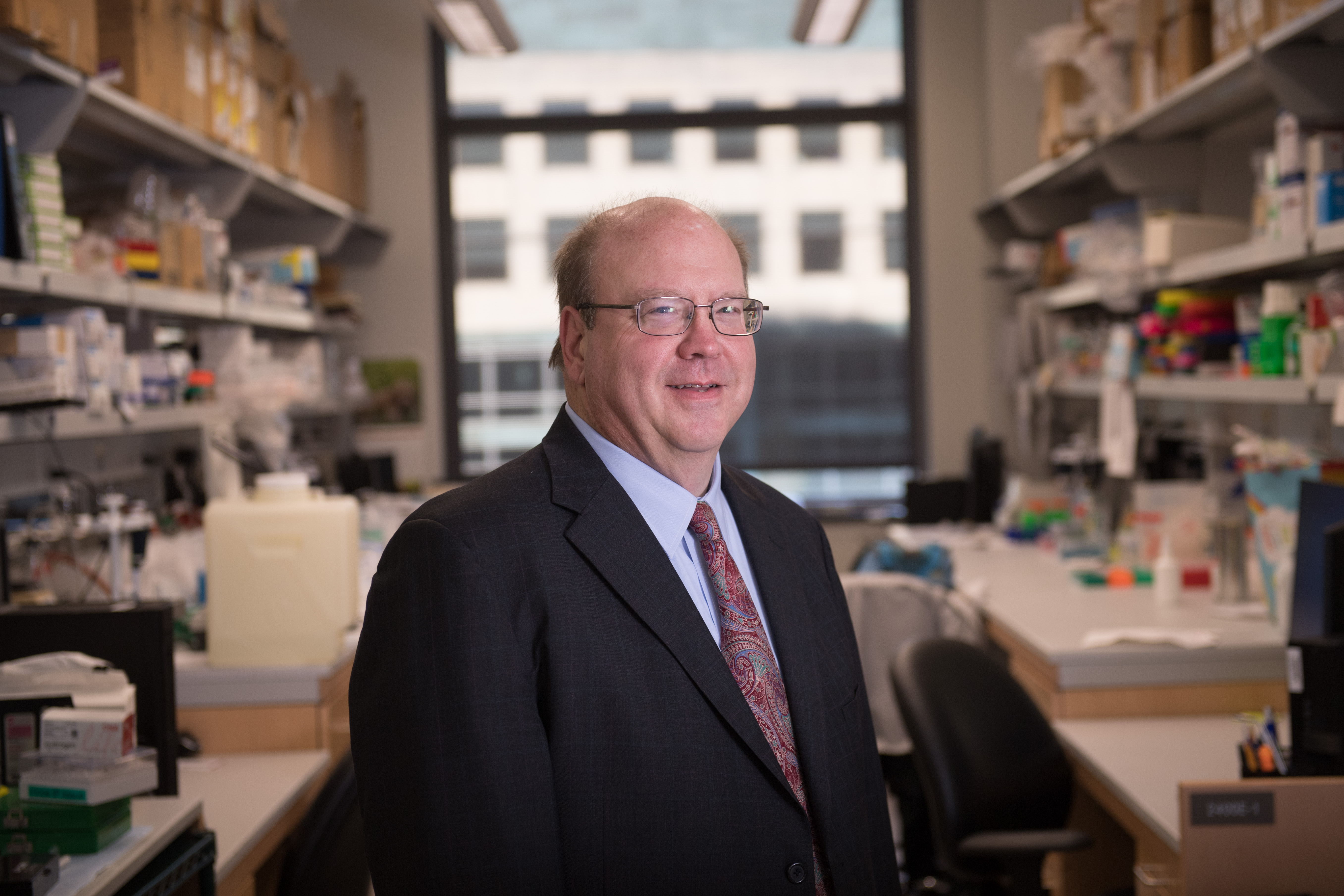
“Reward learning gives us a circuit, a brain region called the striatum that mediates this kind of learning. This type of learning underlies our ability to predict what will happen in the world. Individuals on the autism spectrum have difficulty predicting what will happen next, leading to difficulties in social interaction and communication,” he says. “In the past 10 years, neuroscience has brought in a number of techniques, from physics and engineering to chemistry and biochemistry, that have enabled us to manipulate genes and particular neurons in the brain in a very selective way. What I see going forward is an ability to more broadly put those techniques together to understand how systems of neurons in the brain work to give rise to behavior.”
Abel recognizes that these discoveries will take a lot of effort, innovation, and likely some serendipity, but he says he has little doubt that the UI will make a difference.
“The gift from the Carver Charitable Trust is transformative in that it enables us to attract the best researchers and to pursue new frontiers and ideas in fundamental research,” he says. “I’m confident the University of Iowa can be a game changer because we have the resources to do it and a collaborative community that is committed to it.”
The collaborative, committed community
Members of the Iowa Neuroscience Institute represent 26 academic departments across five colleges and work on a number of thematic research areas ranging from epilepsy to molecular psychiatry to neuroimaging. These researchers bring in more than $50 million in annual external grant support; in 2019, external funding reached $65 million. To encourage innovative and outstanding research, the institute allocated its first round of internal funding support in July 2017, awarding seven research teams $4.6 million over five years.
“Collegiality really makes a huge difference in what we have the potential to do. It’s natural for people here to consider, ‘How could we do this better together?’”
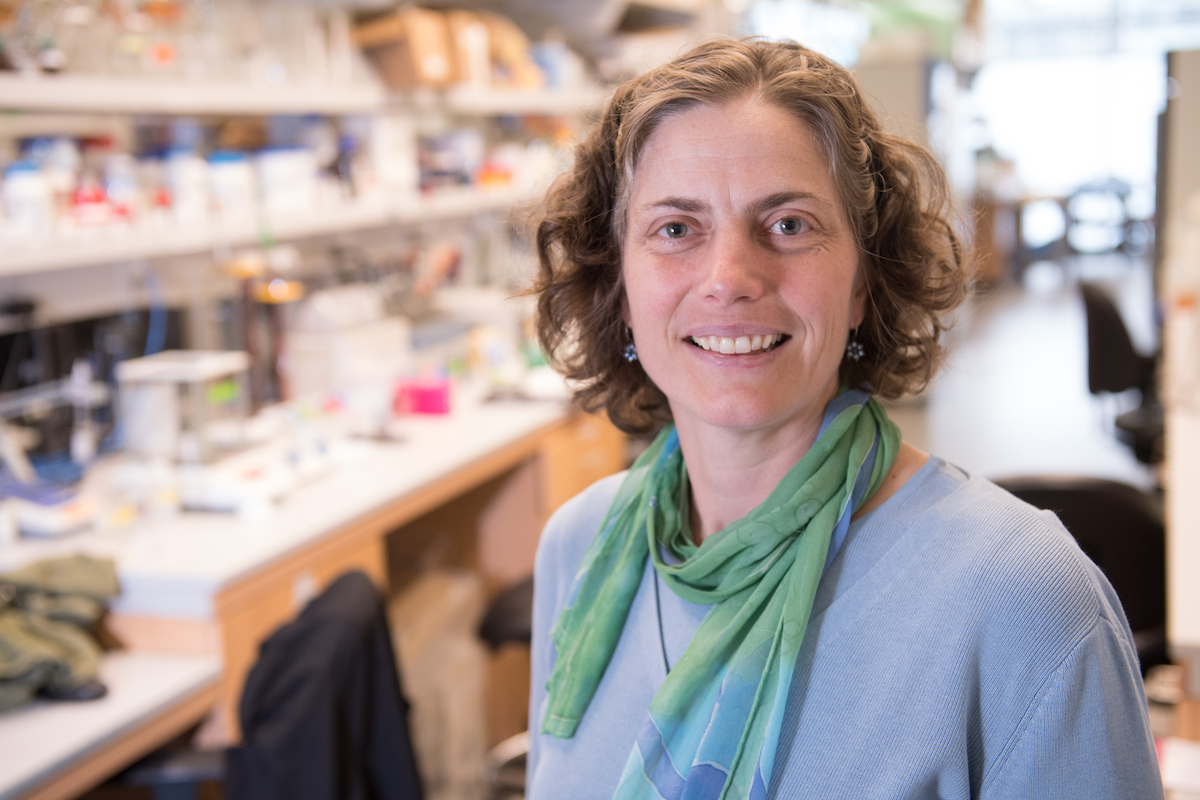
One of the recipients is Hanna Stevens, an assistant professor of psychiatry who runs the Psychiatry and Early Neurobiological Development Lab in the Carver College of Medicine. She researches the genetic and environmental factors that influence early brain development and how those factors may play a role in childhood behavior or influence the risk of psychiatric disorders.
“Fundamental changes occur in the brain very early on that put a person at risk for psychiatric illness later in life,” she says. “We need to understand what those factors are so we can understand how the brain isn’t operating correctly at the time of illness. We also need to find out what preventive measures we can introduce to protect the brain as it develops. For example, we already recommend folic acid supplementation for pregnant women because we understand that folate plays a very large role in the development of the brain.”
Stevens says being in such close proximity to other scientists in the institute has benefitted her research. When there is something she doesn’t understand, whether it be related to molecular biology or data analysis or another area, help is available—and those consultations often bring insight and lead to collaboration.
“Collegiality really makes a huge difference in what we have the potential to do. It’s natural for people here to consider, ‘How could we do this better together?’” says Stevens, who came to the UI in 2014 from the Yale School of Medicine. “That is what everybody is looking for in science—an innovative way to think about the questions you’ve been asking for a long time, an innovative way to help patients that we hadn’t thought of.”
- Aging mind and brain and neurodegenerative diseases
- Auditory neuroscience
- Behavioral and cognitive neuroscience
- Drosophila neurobiology
- Epilepsy
- Interoception and neural control of homeostasis
- Molecular psychiatry
- Neurogenetics
- Neroimaging
- Neuromuscular research
- Pain
- Vision research
For example, Joshua Weiner, a professor of biology in the UI College of Liberal Arts and Sciences, studies brain development at the molecular level. Though not directly targeting therapies, his lab’s research has an important role.
“The human brain is probably the most complex thing in the universe, at least in biology. How do you get from a neural tube in an embryo that is one cell layer thick, a very simple structure, to a human brain with 100 billion neurons, each having maybe 10,000 connections or synapses with other neurons?” says Weiner, who recently received one of four $75,000 accelerator grants from the institute to support a new line of research in his National Institutes of Health–funded lab. “Ultimately, we’re trying to get a better fundamental understanding of how this works, because these processes of neural development go awry in a variety of different disorders, such as autism, intellectual disability, and schizophrenia. In order to develop therapeutics, we need to understand the fundamental mechanisms through which neurons assemble these connections in the first place.”
In addition to having a secondary appointment in the Carver College of Medicine’s Department of Psychiatry, Weiner is the Iowa Neuroscience Institute’s associate director for education and outreach. He says the institute will build on the university’s strong history of neuroscience scholarship and allow researchers the flexibility and time they need to excel.
“With federal funding levels being low, starting a career in science is as hard as it’s ever been. What you need is support, and that comes in many forms—colleagues to help you with new techniques and approaches, access to patients and equipment, and funding,” says Weiner, who came to the UI in 2004 from the Washington University School of Medicine. “At Iowa, we have excellent facilities, research cores, and million-dollar microscopes, and the Carver trust’s investment really allows us to think big and gives us the stability to grow.”
Aaron Boes recently returned to his native Iowa from Harvard University to build on translational research pairing advanced neuroimaging and noninvasive brain stimulation. At UI Hospitals and Clinics, Boes works with patients who have medication-resistant depression. They receive transcranial magnetic stimulation (TMS) five times a week for four to six weeks, and more than half see an improvement.
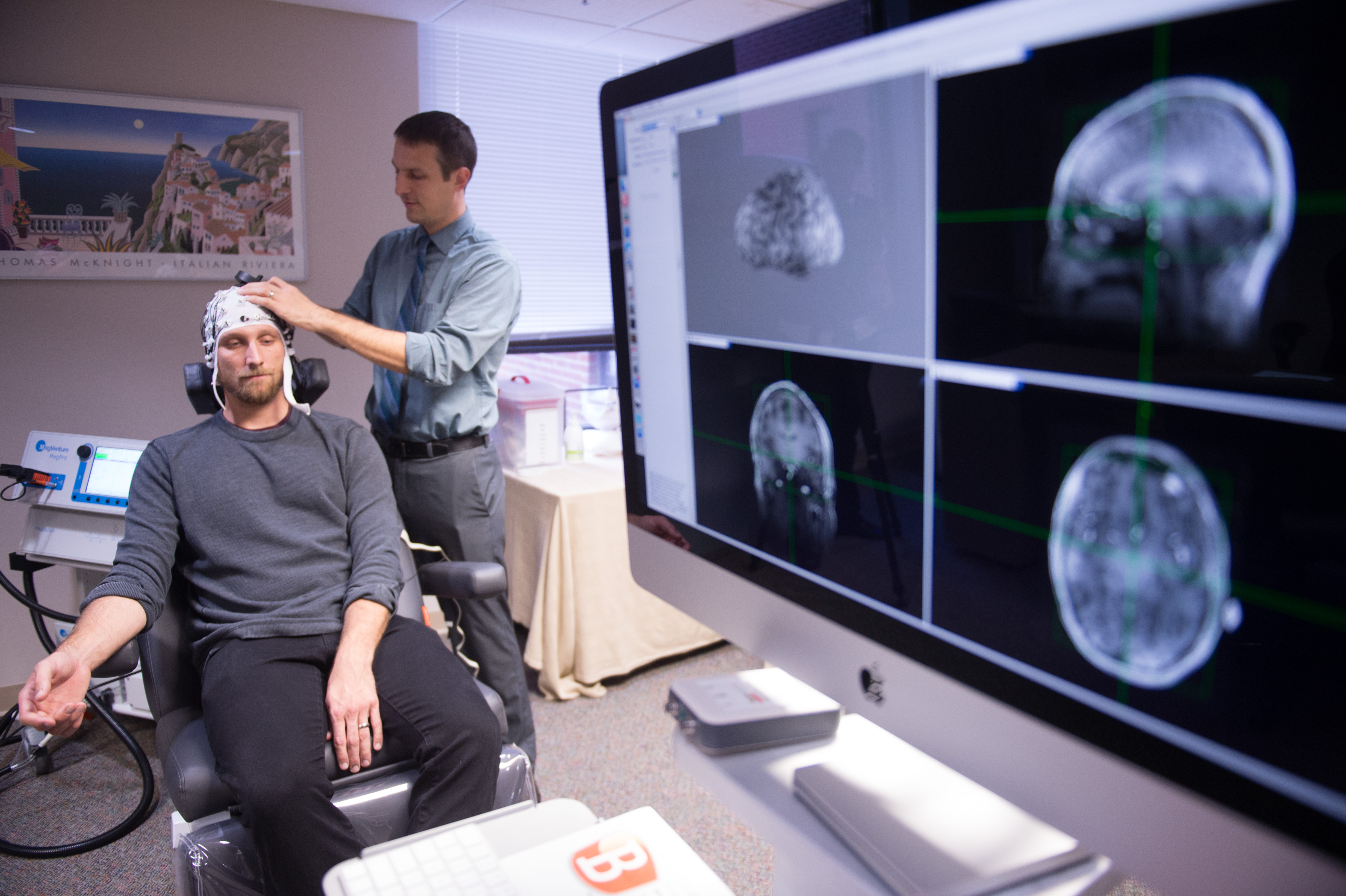
“Focally stimulating the brain using induced currents can have therapeutic effects,” he says. “Though it’s mostly used to treat depression, there’s really no limit to the number of brain-based disorders it can treat.”
In addition to exploring ways to more effectively use and individualize this treatment, Boes oversees two clinical trials to determine whether patients with schizophrenia or bipolar disorder also could benefit from TMS.
Boes says the Iowa Neuroscience Institute’s recent purchase of additional TMS equipment will allow him and his colleagues to explore additional applications. The assistant professor of pediatrics, neurology, and psychiatry is enthusiastic about the possibilities.
“It’s one of the few areas where there is a relatively rapid turnaround in terms of understanding whether something is going to have the effect that you intend it to have,” he says. “It’s been an exciting area for research, and it’s really at its infancy.”
“More than the sum of our parts”
TMS could hold promise for patients suffering from Parkinson’s disease, which gives Assistant Professor Narayanan hope. Narayanan looks forward to the day when he can deliver good news to his patients about treatments for Parkinson’s disease. Neuroscientists working together at the UI, he says, will make a difference.
“The three big problems in Parkinson’s disease involve detection, protection, and compensation: Who’s going to get Parkinson’s disease? How can we protect the circuits that are degenerating in Parkinson’s disease? And how can we compensate for circuits that have already failed in Parkinson’s disease?” he says. “We think any progress we make on these three fronts will benefit patients with all neurodegenerative diseases, Alzheimer’s, frontotemporal dementia. It will also have benefits for patients with psychiatric diseases.
“Every person at the University of Iowa has multiple collaborations,” says Narayanan. “This leads to innovative grants and papers, but also new ideas that enable us to be more than the sum of our parts.”
